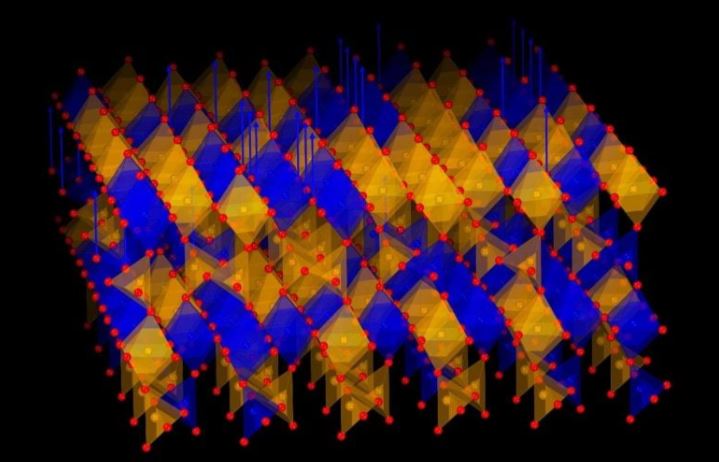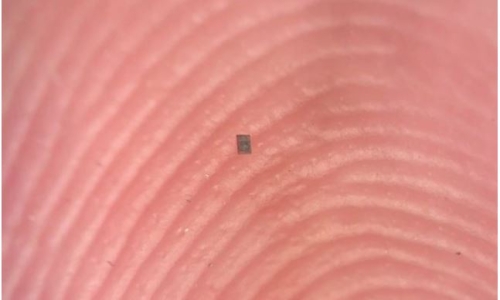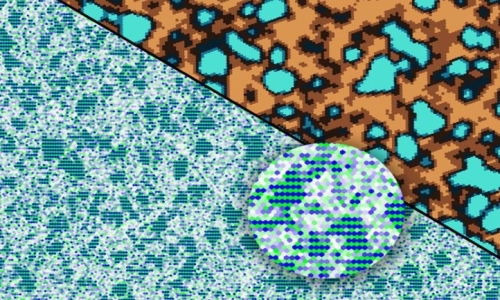


 11:22:44
11:22:44  2025-08-26
2025-08-26  1176
1176

Scientists in Korea and Japan have unveiled a remarkable “breathing” crystal that can repeatedly absorb and release oxygen, almost like living lungs.
Unlike earlier fragile materials, this crystal is stable, reversible, and functions under mild conditions, making it a game-changer for clean energy and smart technologies.
Crystal That Breathes: A Breakthrough in Clean Energy Materials
A group of researchers in Korea and Japan has identified a completely new kind of crystal that can actually “breathe.” The material is able to take in and release oxygen over and over again at relatively low temperatures. This unusual property could open the door to major advances in clean energy systems, including fuel cells, smart windows that regulate heat, and next-generation thermal devices.
The material is a specially engineered metal oxide made of strontium, iron, and cobalt. What makes it remarkable is its resilience: when heated in a simple gas environment, the crystal lets go of oxygen and then draws it back in without breaking down. This cycle can be repeated many times, making the crystal well suited for practical technologies.
From Lab Discovery to Real-World Potential
The remarkable research was led by Professor Hyoungjeen Jeen of the Department of Physics at Pusan National University in Korea, in collaboration with Professor Hiromichi Ohta of the Research Institute for Electronic Science at Hokkaido University in Japan. Their results were published in Nature Communications on August 15, 2025.
“It is like giving the crystal lungs and it can inhale and exhale oxygen on command,” says Prof. Jeen. The ability to control oxygen in this way is vital for devices such as solid oxide fuel cells, which can generate electricity from hydrogen with very low emissions. It is also important for thermal transistors, which channel heat in the same way that switches guide electricity, and for smart windows that can automatically adjust how much heat passes through them depending on outside conditions.
Why This Material Stands Apart
Until now, most materials that could do this kind of oxygen control were too fragile or operated only at harsh conditions, such as extremely high temperatures. This new material works under milder conditions and remains stable.
“This finding is striking in two ways: only cobalt ions are reduced, and the process leads to the formation of an entirely new but stable crystal structure,” explains Prof. Jeen (see the figure above). They also showed that the material could return to its original form when oxygen was reintroduced, proving that the process is fully reversible.
“This is a major step towards the realization of smart materials that can adjust themselves in real time,” says Prof. Ohta. “The potential applications range from clean energy to electronics and even eco-friendly building materials.”
Reality Of Islam |
|

A tiny robo

By applying

Stanford, C

A new study
 9:3:43
9:3:43
 2018-11-05
2018-11-05
10 benefits of Marriage in Islam
 7:5:22
7:5:22
 2019-04-08
2019-04-08
benefits of reciting surat yunus, hud &
 9:45:7
9:45:7
 2018-12-24
2018-12-24
advantages & disadvantages of divorce
 11:35:12
11:35:12
 2018-06-10
2018-06-10
 6:0:51
6:0:51
 2018-10-16
2018-10-16
 10:47:11
10:47:11
 2022-11-22
2022-11-22
 4:2:19
4:2:19
 2022-10-10
2022-10-10
 2:42:26
2:42:26
 2023-02-02
2023-02-02
 5:58:12
5:58:12
 2021-12-18
2021-12-18
 7:32:24
7:32:24
 2022-02-14
2022-02-14
bahlool & the throne of haroun rashid
 8:20:35
8:20:35
 2018-06-21
2018-06-21
a hero waters thirsty wild animals
 9:4:9
9:4:9
 2022-01-06
2022-01-06
 5:41:46
5:41:46
 2023-03-18
2023-03-18
| LATEST |